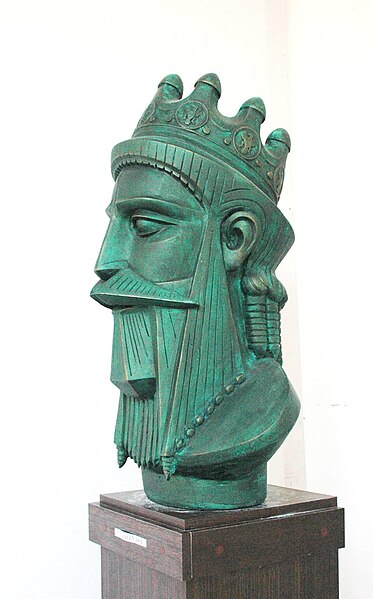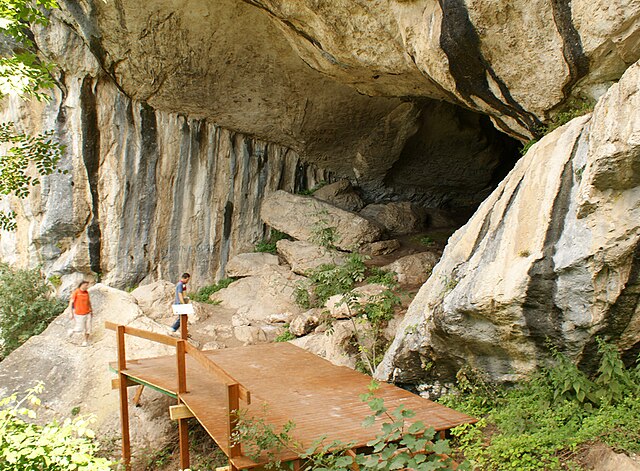During classical antiquity, Albania was home to several Illyrian tribes such as the Albanoi, Ardiaei, Bylliones, Dassaretii, Enchele, Labeatae, Taulantii, Parthini, Penestae, Amantes, and many others, but also Bryges and Epirote tribes, as well as several Greek colonies established on the Illyrian coast in cooperation with the local Illyrians, notably Epidamnos-Dyrrhachium and Apollonia.
The Cave of Pellumbas near Tirana, used as a settlement for ancient humans during the Middle Paleolithic period.
King Gentius, The last ruler of the Ardiaean dynasty.
Queen Teuta of the Ardieai orders the Roman ambassadors to be killed.
Ancient Greek coin of Dyrrachium.
Arbanon was a medieval principality in present-day Albania, ruled by the native Progoni family, and the first Albanian state to emerge in recorded history. The principality was established in 1190 by the Albanian archon Progon in the region surrounding Kruja, to the east and northeast of Venetian territories. Progon was succeeded by his sons Gjin and then Demetrius (Dhimitër), who managed to retain a considerable degree of autonomy from the Byzantine Empire. In 1204, Arbanon attained full, though temporary, political independence, taking advantage of the weakening of Constantinople following its pillage during the Fourth Crusade. However, Arbanon lost its large autonomy ca. 1216, when the ruler of Epirus, Michael I Komnenos Doukas, started an invasion northward into Albania and Macedonia, taking Kruja and ending the independence of the principality. From this year, after the death of Demetrius, the last ruler of the Progoni family, Arbanon was successively controlled by the Despotate of Epirus, then by the Bulgarian Empire and, from 1235, by the Empire of Nicaea.

Image: Dhimiter Arbanon





